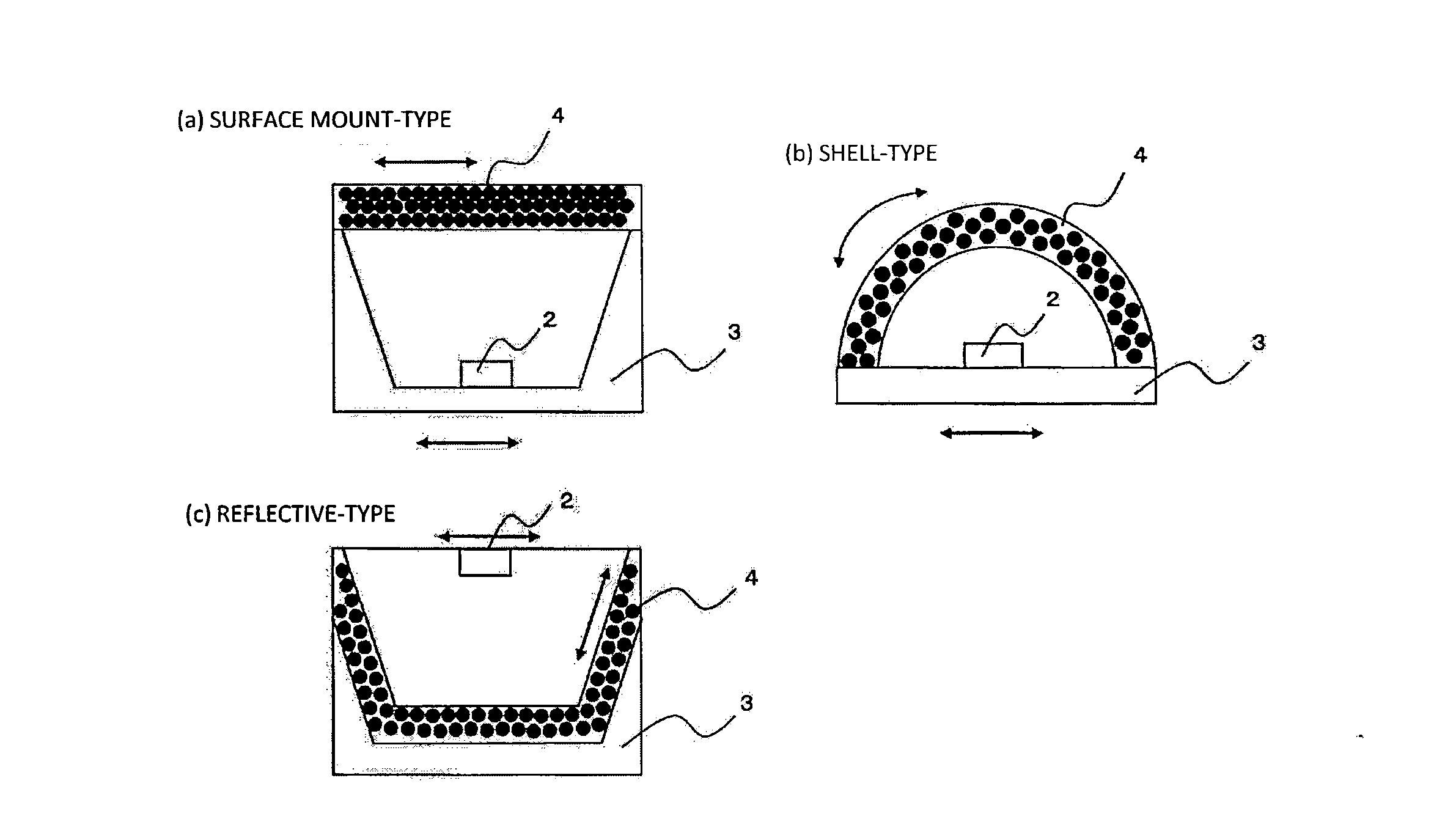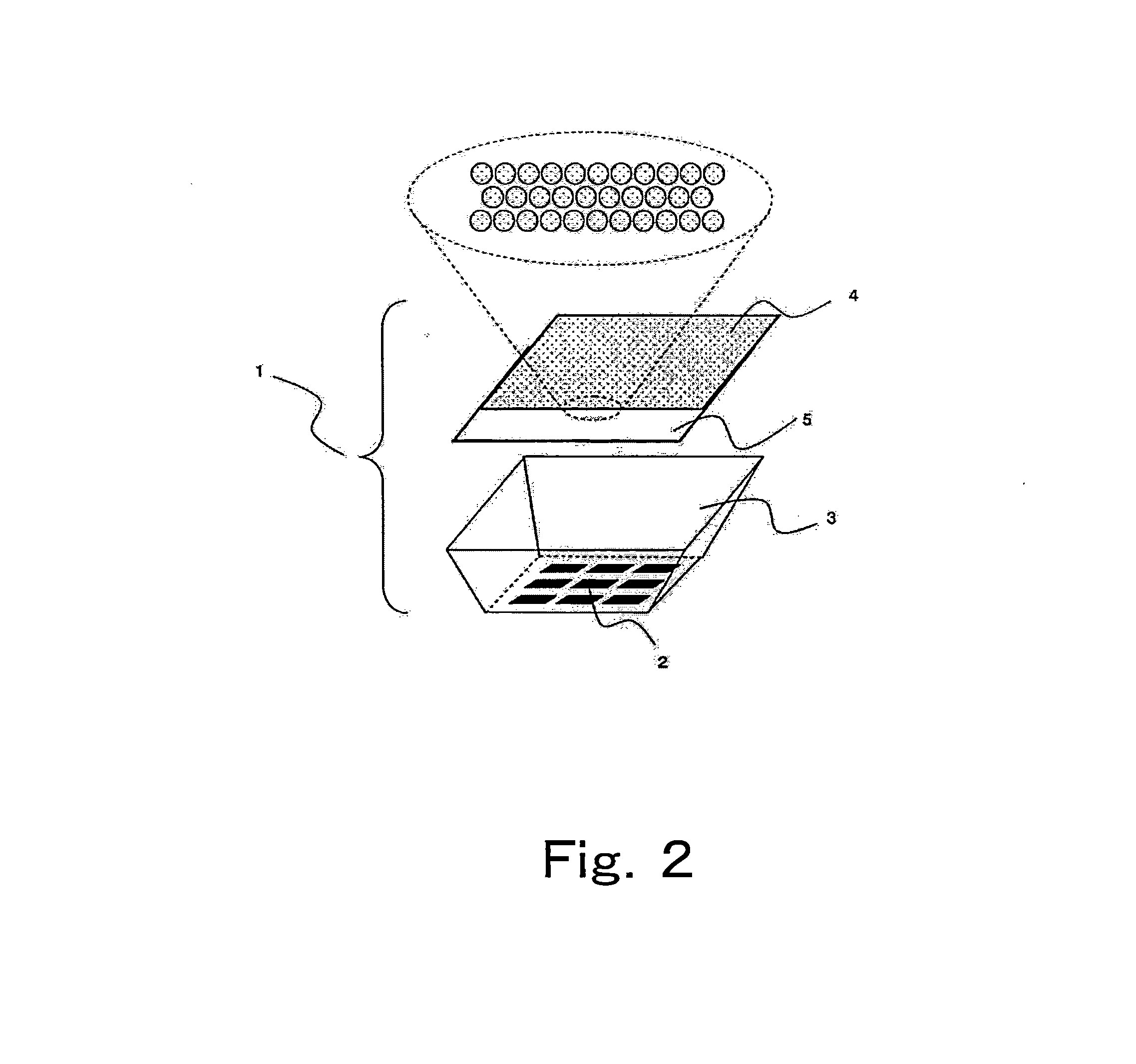Light emitting device
- Summary
- Abstract
- Description
- Claims
- Application Information
AI Technical Summary
Benefits of technology
Problems solved by technology
Method used
Image
Examples
example 1
[0189]The value of the total luminous flux in a case where the volume packing ratio of the phosphor in the phosphor layer was changed in the light emitting device shown in FIG. 11 was studied via simulation.
[0190]More specifically, a light emitting device was fabricated in which a blue-color LED with an emission peak wavelength of 450 nm was used as the semiconductor light emitting element and a phosphor layer obtained by maintaining uniform dispersion of phosphor in the binder resin was used as the phosphor layer, and in which the semiconductor light emitting element and the phosphor layer were disposed spaced apart at a distance of 0.5 mm. As the phosphor contained in the phosphor layer, a CSMS phosphor with a peak wavelength of 514 nm which is represented as Ca3 (Sc, Mg)2Si3O12:Ce (volume median diameter: 12 μm) and a SCASN phosphor with a peak wavelength of 630 nm which is represented as (Sr, Ca) AlSiN3:Eu (volume median diameter: 10 μm) were used and, as the binder resin which ...
example 2
[0193]A light emitting device which comprises a semiconductor light emitting element module and a phosphor layer was fabricated and the total luminous flux was measured.
[0194]As the semiconductor light emitting element module, a single 350 μm square InGaN LED chip with a principal emission peak wavelength of 405 nm which is formed using a sapphire substrate was stuck to the cavity bottom face of a 3528 SMD-type PPA resin package by using a transparent diebond paste with a silicone resin base. Following adhesion and after hardening the diebond paste by applying heat for two hours at 150°, an LED chip side electrode and a package side electrode were connected using Au wire with a diameter of 25 μm. Two bonding wires were employed.
[0195]The phosphor mix ratio is suitably adjusted such that the content of the phosphor in the phosphor layer is a volume packing ratio of 35% and such that the correlated color temperature of the light emitted by the light emitting device is approximately 58...
example 3
[0199]Other than the fact that the content of the phosphor in the phosphor layer is a volume packing ratio of 21%, a light emitting device was fabricated similarly to that of Example 2 and comprising a semiconductor light emitting module and a phosphor layer and the emission spectrum was measured.
[0200]The values of various light emission characteristics (chromaticity coordinates (Cx, Cy), correlated color temperature, total luminous flux) which were calculated from the emission spectrum obtained are shown in Table 1.
PUM
 Login to View More
Login to View More Abstract
Description
Claims
Application Information
 Login to View More
Login to View More - R&D
- Intellectual Property
- Life Sciences
- Materials
- Tech Scout
- Unparalleled Data Quality
- Higher Quality Content
- 60% Fewer Hallucinations
Browse by: Latest US Patents, China's latest patents, Technical Efficacy Thesaurus, Application Domain, Technology Topic, Popular Technical Reports.
© 2025 PatSnap. All rights reserved.Legal|Privacy policy|Modern Slavery Act Transparency Statement|Sitemap|About US| Contact US: help@patsnap.com



